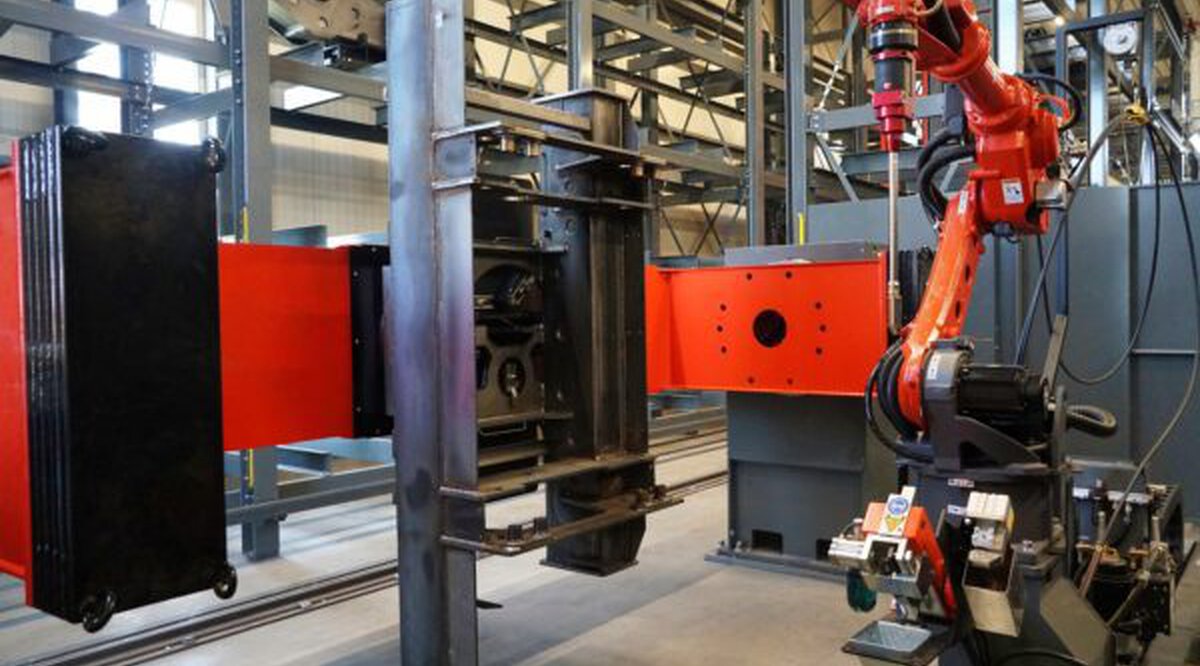Text and photography: MTL Metal Magazine issue 5, 2022
Automation at Lacom in Budel was placed high on the agenda at a very early stage by Lammers. We are now reaping the benefits of this, he says. It ensures efficient production of parts, both for external customers and for the company's own Kinetic loading crane. This means that margins for the company, despite price pressure, are maintained. "Also, automation has made us more attractive as a company to employees. We attract better skilled workers. We find college graduates more easily because they can work with modern machines here. After all, innovation creates challenges." It is precisely these college graduates that Lacom needs because control is changing and the amount of engineering is increasing.
Own product is foundation
Last spring, Lammers took a new step on the automation front: Lacom welds complex assemblies 24/7. Not large series, but rather small batches or even single pieces. Together with Kumatech and Valk Welding, an automated welding cell has been built. The entrepreneur already had this idea years ago, but back then the technology was not that far advanced. Moreover, Lacom did not yet have its own product. Today they do have that proprietary product. Since 2020, Lacom has been building and selling Kinetic wheeled loader cranes under its own control. "The production of these parts lays a foundation for the investment in the welding cell," Lammers explains. The welding cell is partly filled with assemblies for the truck-mounted cranes. This is how he spreads and reduces risk. "And our subcontracting customers reap the benefits because we can produce more efficiently." Efficiency, quality and lead time are key words when it comes to this investment. But what about the cost price? Lammers knows better than anyone that cost price remains important for the subcontracting. "Since corona, however, we see a change among customers. Transportation costs are high, skilled workers are scarce - even in Eastern Europe - and customers are looking for delivery reliability. Once peace has returned soon, some of the work will certainly disappear again to low-wage countries, but more will be produced in the region," he expects. By 'region' in this context, he means Western Europe. Price no longer determines the work Lacom receives in orders; much more so are quality and delivery reliability.
Pallet locations for welding jigs
For these reasons, he made the move to the robotic welding cell. The cell consists of a 35-meter-long warehouse with 72 pallet spaces; half 1500 x 1700 x 1250 mm, the other half 3000 x 1700 x 1250 mm. Each pallet location can store up to 1500 kilograms of weight, and on top of the pallets are the welding jigs. A robot moves the pallets from the fixture unit to the warehouse and to the welding robots. The first Panasonic welding robot is now on the left; on the right side of the cell, everything is ready for the second robot. "As soon as production runs, the second robot will join it," says Lammers. "Then we can do at least 8000 welding hours a year, in an area of just 250 m2." With this, he points out one of the advantages of the robotic welding cell. He calculates: to make 8000 welding hours on an annual basis, 14 good welders are needed. With an average floor space of at least 30 meters per welder, he would have needed almost double that area. Besides, where do you get these 14 experienced welders?

